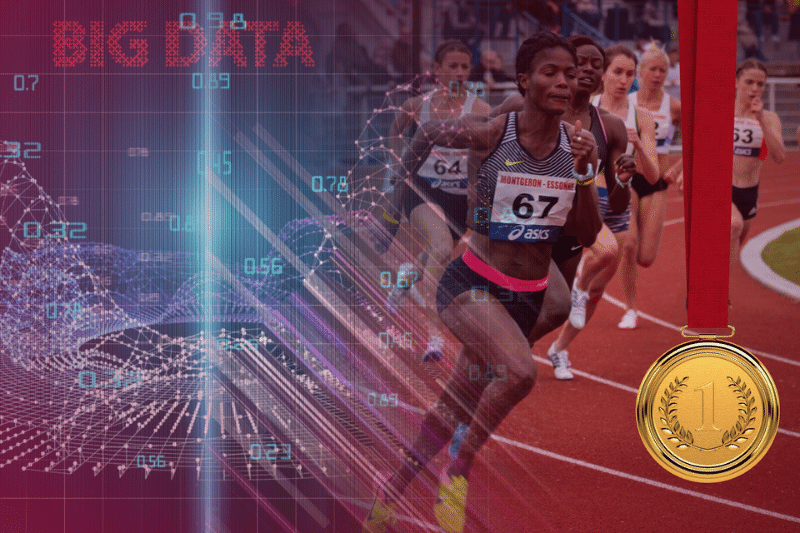
The Olympics have long been a showcase for technological advancements. Every four years, we should expect to witness advancements in computing power, as well as breakthroughs such as cloud storage, Big Data, and Computer Vision.
For instance, the Rio Olympics were no different. With a $1.5 billion IT budget, which includes all game data saved on the cloud. In 2012, London hosted the world's first Big Data-driven Olympics, with 60 gigabytes of data sent per second and 15 terabytes of data generated daily by fans across the world via social media sites like Facebook and Twitter. This is insignificant in relation to our current reliance on data analysis.
Thanks in large part to statistics, the next generation of Olympic athletes was well prepared for the Tokyo 2021 Olympics and are now preparing for the upcoming winter Olympics Beijing 2022. Before they even stepped onto the field, coaches analyzed a range of data, ranging from historical player performance statistics and trends against the competition to fitness measurements like jogging averages and how many push-ups each athlete can do at once. This is Big Data analytics: utilizing all available sources and, in essence, optimizing each exercise with precise details about what has performed best in the past for a certain application.
 These cutting-edge gadgets provided data of an athlete's motions, allowing coaches to figure out how much more training they required or if they were overtraining. It could also be used during training, with 3D modeling providing visualizations from all angles, ensuring that you never miss anything live on the court again, and allowing players to better understand what they need to work on after each match.
These cutting-edge gadgets provided data of an athlete's motions, allowing coaches to figure out how much more training they required or if they were overtraining. It could also be used during training, with 3D modeling providing visualizations from all angles, ensuring that you never miss anything live on the court again, and allowing players to better understand what they need to work on after each match.
Sports teams, like businesses striving to understand the potential of analytics, are discovering that a comprehensive approach to data management and strategy is likely to pay off. The trick is to bring all of this data together, and in a similar vein to the business sector, sporting organizations are increasingly recognizing the necessity of partnerships. The technological skills required to construct a Big Data-driven analytics system are not common among elite sports scientists and physiologists.
Another difficulty is that the sport necessitates a delicate balance of strength and endurance. As a result, conflicts in training regimens might occur, as strength training can work against endurance training and vice versa. Large amounts of previous performance data can help overcome this obstacle by indicating exactly what gains a sportsperson is likely to make when treated to a specific regime.
 Athletes are less likely to be injured and spend less time recovering as a result of this unified approach to analytics. Warning flags can be found across all datasets – physiology, gym, medical, race performance – and compared to previous data to reveal when an athlete is on the verge of pushing oneself too far.
Athletes are less likely to be injured and spend less time recovering as a result of this unified approach to analytics. Warning flags can be found across all datasets – physiology, gym, medical, race performance – and compared to previous data to reveal when an athlete is on the verge of pushing oneself too far.
Thereby, this is exactly why data can help an athlete to win Gold in the Olympics. Data plays an integral part not just to major giants or just businesses, we just saw by the above case, how data can actually make someone win and thrive off. Continue Reading!
Thanks to improved processing capacity, Machine Learning concepts, and Artificial Intelligence, the combination of technology and Sports Data Analytics has opened new opportunities for teams to examine every small aspect of players. In fact, using wearable sensors and Cloud processing power, data is now available for both in-game activity and past games.
Some of the world's most powerful digital companies are now collaborating with major sports teams to develop wearable technology that helps them monitor player performance and individual data, particularly in terms of health. This also allows them to track fitness levels in great detail, which was previously impossible.
These gadgets and sensors come in a variety of sizes. Players don't have to wear them; they can be woven into the fabric of their jerseys, embedded in sports equipment such as balls or bats, or even worn in their shoes. The data is then sent in real-time, allowing coaches to keep an eye on their players from the sidelines and make quick judgments.
You'll need to find a reliable data source that can be quickly updated with new information and then processed to increase the odds for live matches. Look no further than Data Sports Group, which is one of the most reliable sources of Olympics data API solutions. The information offered is factual, useful, and well-refined!










